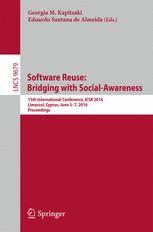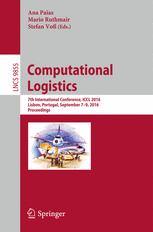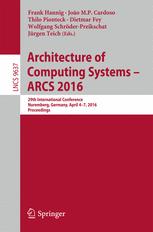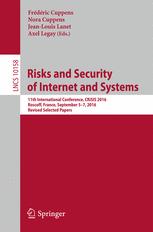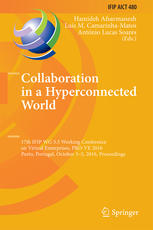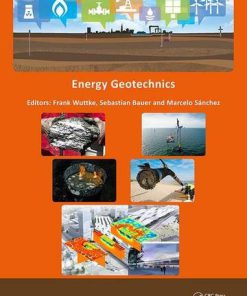Microactuators and Micromechanisms 1st Edition by Lena Zentner,Brian Jensen,Burkhard Corves,Erwin Christian Lovasz 9783319453873 3319453874
$50.00 Original price was: $50.00.$25.00Current price is: $25.00.
Microactuators and Micromechanisms 1st Edition by Lena Zentner,Brian Jensen,Burkhard Corves,Erwin Christian Lovasz – Ebook PDF Instant Download/Delivery:9783319453873,3319453874
Full download Microactuators and Micromechanisms 1st Edition after payment
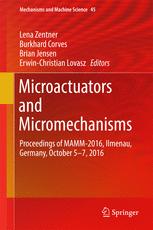
Product details:
ISBN 10:3319453874
ISBN 13:9783319453873
Author:Lena Zentner,Brian Jensen,Burkhard Corves,Erwin Christian Lovasz
This book brings together investigations which combine theoretical and experimental results related to such systems as capsule micromechanisms, active micro catheters, nanotube vascular stents, mechanisms for micromilling, different compliant mechanisms including grippers and compliant systems with actuators and sensors, microrobots based on vibrations, tactile sensors, tooth brackets, compliant valves, and space reflectors.
This volume contains twenty-two contributions from researchers from ten countries, represented at the 4th Conference on Microactuators and Micromechanisms, which was held in 2016 in Ilmenau, Germany. The aim of the conference was to provide a special opportunity for a know-how exchange and collaboration in various disciplines concerning systems pertaining to micro-technology.
This Conference was organized under the patronage of IFToMM (International Federation for the Promotion of Mechanism and Machine Science).
Microactuators and Micromechanisms 1st Table of contents:
1 Study on Polymer-Made 3DOF Spatial Parallel Manipulator
Abstract
1 Introduction
2 Polymer–Made Revolute Hinges
2.1 Fatigue Test Under a Static Tensile Load and Repeated Bending
2.2 Polymer-Made 2DOF Planar Pantograph Mechanism and Polymer-Made 3DOF Planar Mechanism
3 Polymer–Made Spherical Hinges
3.1 FEM Analysis of Polymer-Made S Hinge
3.2 Fatigue Test of S Hinge
4 Polymer-Made 3DOF Spatial Parallel Manipulator
4.1 Mechanism Synthesis
4.2 Mechanism Parameters and Discussion
4.3 Displacement Analysis and Joint Force Analysis of the 3DOF Parallel Manipulator
4.4 Polymer-Made 3DOF Parallel Manipulator
5 Conclusion
Acknowledgments
References
2 Miniaturization of Check Valves
Abstract
1 Introduction
2 Poperies of a Ball Check Valve
3 System Requirements for a New Valve
4 Development of a New Compliant Valve
4.1 Design Variants of the Spring Layer
4.2 Comparison of Mounting Volumes
4.3 Functional Comparison of the Valve Types
5 Conclusion and Outlook
References
3 A Biologically Inspired Sensor Mechanism for Amplification of Tactile Signals Based on Parametric
Abstract
1 Introduction
2 Theoretical Analysis
2.1 Geometry and Assumptions of the Model
2.2 Equation of Motion and Its Approximation
3 Parametric Resonance
3.1 Procedure of Averaging
3.2 Region of the Principal Parametric Resonance
4 Numerical Analysis and Results
4.1 Remarks on the Simulations
4.2 Regions of the Parametric Resonance
5 Conclusions
Acknowledgments
References
4 Towards the Development of Tactile Sensors for Determination of Static Friction Coefficient to Sur
Abstract
1 Introduction
2 State of the Art
3 Aim and Scope
4 Modeling
5 Simulation and Experiment
6 Conclusions
References
5 Development and Investigation of Photoelastic Sensor for Torque Measurement
Abstract
1 Introduction
1.1 Working Principle of Photoelastic Torque Sensors
1.2 Theoretical Background
2 FEM Analysis of the Motor
3 FEM Analysis of the Sensor
4 Measurement of Starting Torque
4.1 Measurement Arrangement
4.2 Calibration, Measurement and Results
5 Conclusions
References
6 Flexural Body for a Wireless Force/Displacement Sensor
Abstract
1 Introduction
2 Design of Sensor Mechanisms
2.1 Functional Requirements
2.2 Proposed Compliant Structures
2.3 Stiffness Analysis
3 Conclusions
Acknowledgments
References
7 Capsule Micromechanism Driven by Impulse—Wireless Implementation
Abstract
1 Introduction
2 Structure and Principle of the Traveling Capsule
2.1 Structure of the Capsule
2.2 Theoretical Analysis
3 Implementation
3.1 Control Circuit
3.2 Experiments and Results
4 Medicine Releasing Mechanism for the Capsule
5 Goal of the Capsule
6 Summary
Acknowledgments
References
8 Development of Peristaltically Propelled Active Catheter Used in Radial Artery
Abstract
1 Introduction
2 Principle of Movement of Active Catheters
3 Development of Active Catheter System
3.1 Structure of Active Catheter
3.2 Mechanisms of Pressure Feeding and Aspiration of Fluid
4 Driving Experiment Using Silicon Tubes
4.1 Outline of Experiment
4.2 Experimental Setup
4.3 Experimental Method
4.4 Results
5 Driving Experiment Using an Endovascular Surgery Simulator
5.1 Outline of Experiment
5.2 Experimental Method
5.3 Results
6 Discussion
7 Conclusion
Acknowledgments
References
9 Locomotion Principles for Microrobots Based on Vibrations
Abstract
1 Introduction
2 Locomotion Principles
2.1 Nature Inspiration
2.2 Vibration Driven Locomotion
3 Locomotion Based on Low and High Frequency Vibration Drives
3.1 Quasi-static Mobile Robots
3.2 Resonant Mobile Robots
4 Multidirectional Resonant Robots
4.1 Prototype Design
4.2 Motion Principle and Control
4.3 Modeling and Simulation
5 Conclusions
Acknowledgments
References
10 Exploration of Carbon-Filled Carbon Nanotube Vascular Stents
Abstract
1 Introduction
2 Design Exploration
2.1 Auxetic Stent Design
2.2 Maximum Force Stent Design
3 Optimization
3.1 Auxetic Stent Optimization
3.2 Maximum Force Stent Optimization
4 Fabrication and Testing
4.1 Fabrication
4.2 Fixture Design and Testing Procedure
4.3 Cylindrical Stent Fabrication
4.4 Arterial Response
5 Discussion
6 Conclusions and Recommendations
Acknowledgments
References
11 A Novel Gripper Based on a Compliant Multistable Tensegrity Mechanism
Abstract
1 Introduction
2 Theory
2.1 Equilibrium Configurations
2.2 Gripper Arm Design
2.3 Actuation
3 Experiments
4 Conclusions
Acknowledgments
References
12 Selection of the Optimal Rigid-Body Counterpart Mechanism in the Compliant Mechanism Synthesis Pr
Abstract
1 Introduction
2 Rigid-Body Linkages for Rectilinear Guiding
2.1 Hoecken Four-Bar Linkage
2.2 Roberts-Tsebysev Four-Bar Linkage
2.3 Watt Four-Bar Linkage
2.4 Evans Four-Bar Linkage
2.5 Scott-Russel Mechanism
2.6 Discussion
3 Compliant Hoecken Mechanism
4 Conclusions
References
13 Design and Experimental Characterization of a Flexure Hinge-Based Parallel Four-Bar Mechanism for
Abstract
1 Introduction
2 Motion Task
3 Synthesis of the Compliant Linkage Mechanism
3.1 Rigid-Body Mechanism
3.2 Compliant Mechanism
3.3 Deployment of Design Guidelines for Flexure Hinge Contour Optimization
4 Simulative Investigations of the Parallel Mechanism
4.1 Rigid-Body Simulation
4.2 FEM Simulation
5 Measurements of Parallel Mechanism Prototypes
5.1 Linear Deviation and Path Deviation of the Coupler
5.2 Rotation of the Coupler
6 Conclusion and Outlook
Acknowledgments
References
14 Dynamic Model of a Compliant 3PRS Parallel Mechanism for Micromilling
Abstract
1 Introduction
2 Dynamic Analysis
2.1 Compliant 3PRS Description and Hypotheses
2.2 Actuated Plates
2.3 Platform Translational Dynamics
2.4 Platform Rotational Dynamics
2.5 Legs
2.6 Dynamic Model of the Manipulator
2.7 Joints Stiffness
3 Experimental Validation
4 Conclusions
Acknowledgments
References
15 Dynamic Analysis of a Fatigue Test Bench for High Precision Flexure Hinges
Abstract
1 Introduction
2 Analytical Investigation
2.1 Kinematics
2.2 Kinetics
3 Results
4 Conclusions
Acknowledgments
References
16 Self-setting Locks for Petal Type Deployable Space Reflector
Abstract
1 Introduction
2 Classical Design of Petal Type Reflector
3 New Design of Petal Type Reflector
4 Self-setting Locks and Deployment Repeatability
5 Conclusions
References
17 Monolithic and Statically Balanced Rotational Power Transmission Coupling for Parallel Axes
Abstract
1 Introduction
2 Theoretical Model
2.1 Rigid-Body Oldham Coupling
2.2 Pseudo Rigid-Body Model and Static Balancing Conditions
2.3 Compliant Design
3 Model Validation
3.1 Fabrication
3.2 Experimental Evaluation
4 Conclusions
References
18 Investigation of the Novelty Brackets “Gold-S”
Abstract
1 Introduction
2 Function of the Bracket “Gold-S”
3 Modeling of the Brackets “Gold-S”
3.1 Geometry and Material of the Brackets “Gold-S”
3.2 Groundwork and Boundary Conditions
3.3 Improvement of Compliant Mechanism Geometry
4 Results of Modeling
5 Experimental Investigations
5.1 Materials and Methods
5.2 Experimental Investigation of the Compliant Mechanisms
5.3 Results of the Experimental Investigation
6 Discussion
7 Conclusion and Outlook
References
19 Dynamic Behavior of Active Lightweight Compliant Mechanisms with Integrated Piezoceramic Actuator
Abstract
1 Introduction
2 Investigated Structure
3 Equivalent Two-Layered Pseudo Rigid Body Active Model Cell
4 Analytic Dynamics Study of an Actuating Layer
5 Dynamic Simulation of a Multi Body System
6 Experimental Investigation on an ACM Demonstrator
7 Comparison Between Simulation and Experimental Results
8 Conclusions
Acknowledgments
References
20 Synthesis of Compliant Mechanisms With Defined Kinematics
Abstract
1 Introduction
2 Design Problem
3 Optimization Formulation
4 Implementation
5 Problem Statement of Design Examples
6 Results and Discussion
7 Conclusion and Future Work
References
21 A Concept of Adaptive Two Finger Gripper with Embedded Actuators
Abstract
1 Introduction
2 Synthesis Methodology for Adaptive Compliant Gripper with Embedded Actuators
3 Analysis of Behavior of the Adaptive Compliant Gripper with Embedded Actuators
4 Conclusions
Acknowledgments
References
22 Implementation of Self Contact in Path Generating Compliant Mechanisms
Abstract
1 Compliant Mechanisms
2 Motivation
3 Continuum Discretization and Negative Circular Masks
4 Boundary Smoothing and Finite Element Formulation
4.1 Boundary Smoothing
4.2 Finite Element Formulation
5 Contact Modeling and Analysis
5.1 Normal Contact
5.2 Contact Discretization
6 Synthesis Example
7 Conclusion
References
23 Erratum to: Dynamic Analysis of a Fatigue Test Bench for High Precision Flexure Hinges
People also search for Microactuators and Micromechanisms 1st :
micro-c method
micro electromagnetic actuator
microactuators in mems
microactuator
j microbiological methods
Tags:
Lena Zentner,Brian Jensen,Burkhard Corves,Erwin Christian Lovasz,Micromechanisms,Microactuators
You may also like…
Science (General) - International Conferences and Symposiums
Computers - PC & Video Games
Cookbooks




